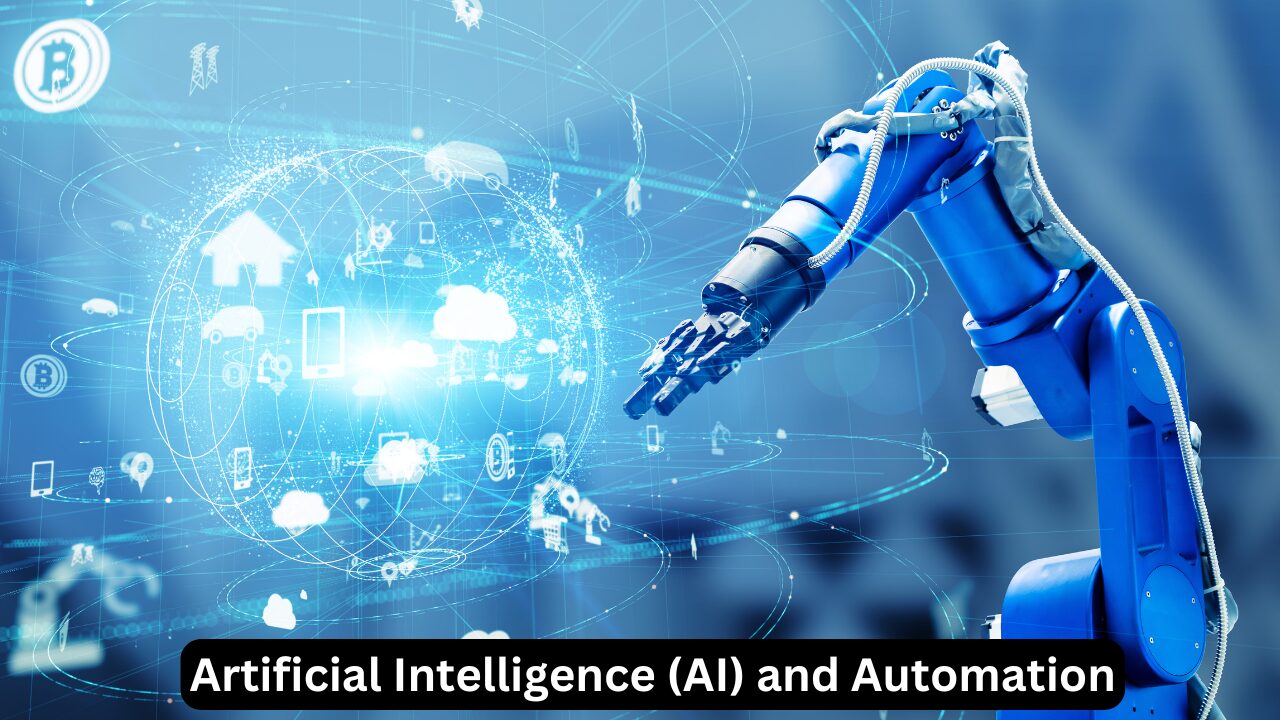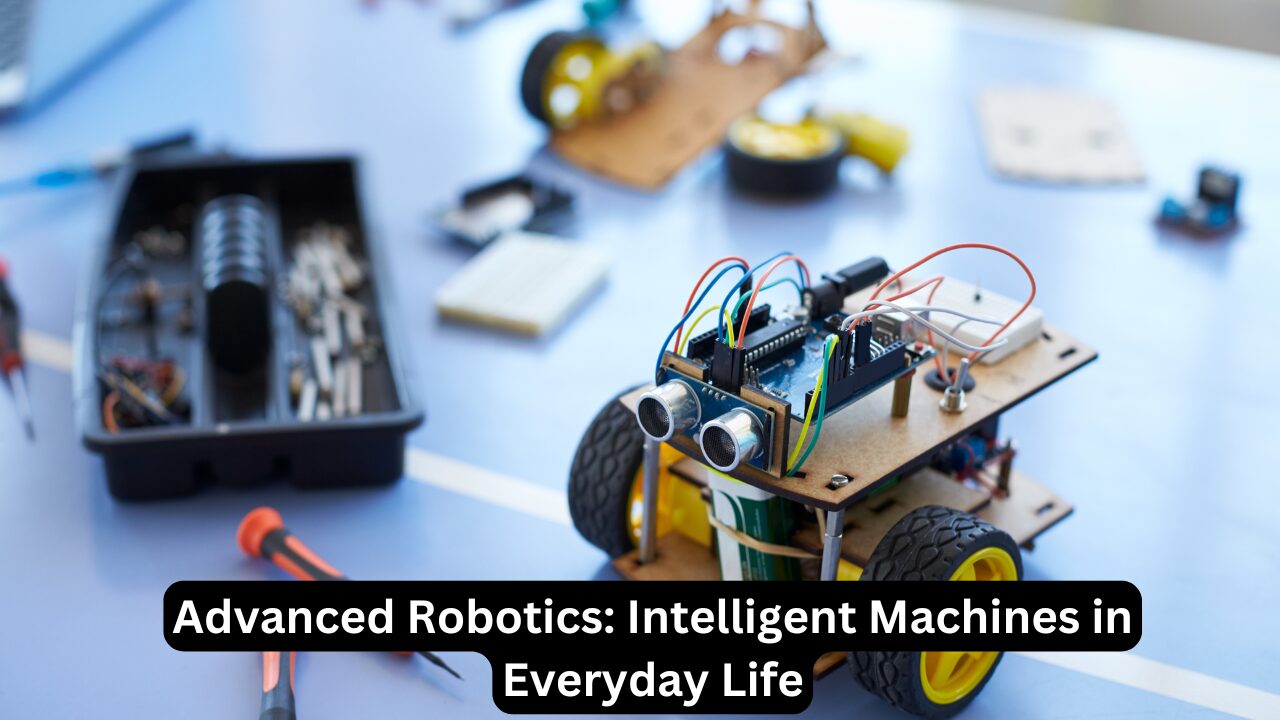As the USA continues to lead global technological innovation, 2025 promises transformative changes across industries. The technology trends in the USA will redefine businesses, reshape lifestyles, and address some of the most pressing challenges of our time. This comprehensive guide explores the top 10 trends set to dominate 2025, providing insights into their applications, opportunities, and implications.
Why We Need Technology in Our Daily Life
Technology is no longer just an optional tool; it has become the backbone of modern living, seamlessly integrating into every facet of our daily routines. From the moment we wake up to the sound of an alarm on our smartphones to managing professional and personal tasks through interconnected devices, technology ensures convenience, efficiency, and connectivity.
One of its primary roles is solving everyday problems. For example, navigation apps guide us through unfamiliar routes, while online platforms allow instant communication with people across the globe. In healthcare, wearable devices and telemedicine services enable real-time monitoring of vital signs, ensuring proactive care and early intervention.
Moreover, technology supports education and skill development, providing access to endless resources and learning tools that empower individuals. It also simplifies mundane tasks like shopping, bill payments, and banking, giving us more time to focus on creativity, relationships, and self-improvement.
In an era of rapid change, the role of technology extends beyond utility to fostering innovation and resilience. It connects us to opportunities, helps us stay informed, and enhances our quality of life, making it an indispensable part of our daily existence.
1. Artificial Intelligence (AI) and Automation: Redefining Business Efficiency

Artificial Intelligence continues to revolutionize how businesses operate, from customer engagement to predictive analytics. By 2025, Generative AI—a subset of AI capable of creating realistic content such as text, images, and videos—will drive innovations in content creation, scientific discovery, and marketing.
Meanwhile, hyperautomation, which integrates AI with robotics and machine learning, will become central to process optimization. This will impact industries such as manufacturing, where autonomous robots can take over repetitive tasks, and healthcare, where predictive AI will improve diagnostics and personalized medicine.
However, the rapid adoption of AI raises ethical concerns, such as data privacy and algorithmic bias. Companies must ensure ethical AI frameworks are in place to maintain public trust.
2. Advanced Connectivity: Unlocking the Potential of 5G, 6G, and IoT
The widespread deployment of 5G technology in the USA has paved the way for ultra-fast, reliable connectivity. By 2025, the country will begin experimenting with 6G networks, offering speeds up to 100 times faster than 5G, enabling real-time communication for autonomous systems and immersive virtual environments.
The Internet of Things (IoT) will expand further, connecting billions of devices across homes, industries, and public infrastructure. Smart homes equipped with AI-driven IoT devices will optimize energy consumption, while smart cities will enhance public safety and reduce traffic congestion.
Challenges to overcome: Despite the benefits, securing IoT networks against cyberattacks remains a priority, with zero-trust security models emerging as a key solution.
3. Quantum Computing: The Dawn of Unprecedented Computational Power
Quantum computing represents a paradigm shift in computational capabilities. Unlike classical computers, which process information as binary bits, quantum computers use qubits to perform complex calculations exponentially faster. In 2025, the USA is poised to lead in quantum computing applications for finance (optimizing investment portfolios), pharmaceuticals (accelerating drug discovery), and logistics (route optimization).
Key development areas include:
- Post-quantum cryptography to safeguard sensitive data.
- Quantum machine learning for predictive analytics.
The high cost of developing quantum hardware remains a barrier, but increased investments from companies like IBM and Google are accelerating progress.
4. Immersive Technologies: VR, AR, and Brain-Computer Interfaces
By 2025, immersive technologies such as virtual reality (VR) and augmented reality (AR) will move beyond entertainment to transform industries like education, retail, and healthcare. Extended Reality (XR), which blends VR and AR, will enable virtual training sessions, remote surgeries, and virtual real estate tours.
Brain-Computer Interfaces (BCIs) represent the next frontier, allowing users to control devices using their thoughts. This breakthrough will benefit individuals with disabilities, offering new levels of independence.
Emerging applications:
- Virtual collaboration spaces for remote work.
- Personalized shopping experiences with virtual store walkthroughs.
5. Advanced Robotics: Intelligent Machines in Everyday Life

Robots are becoming more versatile and intelligent, thanks to advancements in AI and edge computing. By 2025, robots will handle tasks ranging from warehouse management to precision farming. Autonomous vehicles, including drones, will become commonplace in logistics and agriculture, reducing costs and environmental impact.
The USA is also developing humanoid robots capable of interacting naturally with humans, aiding in customer service and elderly care. These advancements promise efficiency but also raise questions about job displacement and ethical usage.
6. Sustainability and Climate Technology: Innovations for a Greener Future
Environmental concerns are driving the adoption of green technologies. In 2025, the USA will focus on:
- Renewable energy solutions like solar and wind power.
- Energy storage systems for grid stability.
- Climate technology for carbon capture and sustainable agriculture.
Smart cities will incorporate AI-driven waste management systems and optimize energy use, ensuring urban growth aligns with environmental goals. These technologies not only address climate change but also provide economic opportunities by fostering a circular economy.
7. Biotechnology and HealthTech: Revolutionizing Healthcare
Biotechnology is advancing rapidly, with gene editing technologies like CRISPR leading the way. By 2025, breakthroughs in synthetic biology will enable the production of bio-based materials and personalized medicines.
The USA is also investing in preventive medicine, utilizing wearable devices to monitor health in real time. Nanotechnology will play a crucial role in targeted drug delivery, reducing side effects and improving treatment outcomes.
Challenges: Ethical considerations around genetic manipulation and data privacy in health monitoring must be addressed.
8. Blockchain and Decentralized Technologies: Building Digital Trust
Blockchain technology is evolving beyond cryptocurrencies to power secure, decentralized applications. By 2025, industries such as finance, supply chain, and healthcare will leverage blockchain for:
- Transparent supply chain tracking.
- Decentralized finance (DeFi) for peer-to-peer transactions.
- Secure sharing of patient records in healthcare.
While blockchain offers unparalleled security, scalability issues and regulatory hurdles remain significant challenges.
9. Cybersecurity Innovations: Adapting to Emerging Threats
As technology advances, so do cyber threats. By 2025, cybersecurity strategies will focus on AI-driven threat detection and zero-trust architecture, ensuring robust protection against breaches.
Key innovations include:
- Behavioral analytics to detect anomalies.
- Quantum-proof encryption for safeguarding sensitive information.
The USA is also prioritizing public-private partnerships to combat cybercrime effectively, emphasizing the importance of collective defense mechanisms.
10. Space Technology: Pioneering the Final Frontier

The USA continues to lead in space exploration, with NASA and private companies like SpaceX focusing on ambitious projects such as Mars colonization and space tourism. Satellite-based global internet networks will bridge the digital divide, providing connectivity to remote regions.
Emerging technologies, such as autonomous spacecraft and in-orbit manufacturing, are transforming how humanity approaches space exploration. These advancements not only enhance scientific understanding but also open up commercial opportunities.
Comprehensive Table of Technology Trends
| Trend | Key Applications | Industries Affected |
|---|---|---|
| Artificial Intelligence | Generative AI, Predictive Analytics | Healthcare, Manufacturing |
| Advanced Connectivity | 5G/6G, IoT | Smart Cities, Telecom |
| Quantum Computing | Qubits, Post-Quantum Cryptography | Finance, Logistics |
| Immersive Technologies | VR, AR, BCIs | Education, Retail, Healthcare |
| Advanced Robotics | Autonomous Vehicles, AI Robotics | Logistics, Agriculture |
| Sustainability | Renewable Energy, Smart Cities | Urban Planning, Agriculture |
| Biotechnology | Gene Editing, Preventive Medicine | Healthcare, Biotech |
| Blockchain | DeFi, Supply Chain Transparency | Finance, Healthcare |
| Cybersecurity | Zero-Trust Security, AI Detection | Finance, IT |
| Space Technology | Space Tourism, Satellite Internet | Aerospace, Connectivity |
FAQs
- What are the top technology trends in the USA for 2025?
Key trends include AI, 5G, quantum computing, sustainability, immersive technologies, and advanced robotics. - How is AI transforming industries?
AI enhances efficiency, automates repetitive tasks, and improves decision-making across sectors like healthcare and manufacturing. - What is quantum computing’s significance?
Quantum computing offers unparalleled computational power for tasks like cryptography, drug discovery, and logistics optimization. - How will immersive technologies evolve by 2025?
VR, AR, and BCIs will transform education, healthcare, and retail through hyper-personalized experiences. - What challenges do these trends face?
Ethical concerns, regulatory hurdles, and cybersecurity risks must be addressed to ensure sustainable adoption.
Conclusion: Shaping the Future with Technology
As we advance into 2025 and beyond, it’s evident that technology is not just a tool but a transformative force reshaping every aspect of our lives. From improving daily conveniences to driving monumental changes in industries like healthcare, education, and sustainability, the innovations discussed in the technology trends in the USA highlight how indispensable these advancements have become.
These technologies address pressing challenges, foster global connectivity, and open doors to opportunities previously unimaginable. Whether it’s artificial intelligence revolutionizing business processes, immersive technologies creating new dimensions for interaction, or sustainability efforts paving the way for a greener planet, the role of technology is foundational to human progress.
However, the path forward isn’t without hurdles. Ethical dilemmas, cybersecurity threats, and the need for widespread digital literacy demand proactive efforts from governments, businesses, and individuals. By embracing innovation responsibly, the USA—and the world—can harness the full potential of technology to build a future that’s smarter, more equitable, and deeply interconnected.
In this ever-evolving landscape, staying informed and adaptable is key, as technology’s impact will only grow, driving us toward a future that redefines the limits of what’s possible. Please follow out blog Technoloyorbit.



